I took the opportunity of an act of kindness from China Chadao to learn a little more about Douji's hitherto-mysterious range of blends.
I used the 2010 and 2011 catalogues to obtain my data (with prices from China Chadao), given that they are the most complete; the 2012s still seem to be making their way into the market. Note that in all of the below, "Dou" is pronounced "DOH!", rather like Homer Simpson, and with just as much gusto. In the third tone.
In order of increasing (2011) price per gram:
1. Xiangdou [fragrant-Dou] brick, $20 / 250g
2. Hongdadou, Hongshangdou [red great-Dou, red upper-Dou] cake, $30 / 357g
3. Landadou, Lanshangdou [blue great-Dou, blue upper-Dou] cake, $35 / 357g
4. Yundou [harmony/charm-Dou] brick, $33 / 250g
5. Yudou [jade-Dou] cake, $49 / 357g
6. Jindou [gold-Dou] cake, 357g
Note that #3 is a stronger version of #2. The blends really do seem to be "eclectic":
Xiangdou: Bulang, Damenglu*, Menghai
Dadou: Manzhuan, Mengsong, Youle
Shengdou: Mengku, Menghai, Simao
Yundou: Hekai, Mengku, Mengsong, Youle
Yudou: as above
Jindou: Banzhang, Jingmai, Yiwu
*Pinyin errors creep into the translations; "Damenglu" does not exist, but could perhaps refer to Manlushan in the Menghai / Mengsong region.
With such broad ranges of source material, often specified only vaguely ("Menghai" is a county, "Simao" is an entire prefecture), the above are only a very sketchy guide. The proof of the pudding is in the tasting - which is why we are where we are, after all.
The blends all have very similar appearances before the water boils: they are small- and medium-sized leaves, appearing in largish fragments. Typically, they have a decent and clean scent of freshly blended maocha.
The "house style" of Douji is darkness, heaviness, and tobacco aplenty - although in a pleasant and clean manner, compared with the tar-and-pitch of modern Xiaguan (which someone once aptly described as being like "black cigars"). The Douji house style is detectable in their single-mountain cakes, but is absolutely obvious in their blends.
This Dadou is strong. I am not sure if it is "red" or "blue", but I suspect the latter due to its beefy kuwei [decent throaty bitterness]. It is also very sweet - after a few infusions, it warms up into a honey-like tone which is welcome, in combination with the scents of tobacco and the solid bitterness.
It has a base of green leafy plantation characteristics, but this is a (relatively) inexpensive cake. Not at all bad. I fondly recall my first encounter with this blend in 2008 (yikes, half a decade ago?) which was, I believe, the first year for this blend: back then, it was creamy, soapy, and definitely milky. The blend has changed since then - for better or worse I cannot say, but it is noticeably different.
The Yudou, pictured above, is nominally the better cake - it certainly costs more. The leaves, pictured above, look very similar to those of the Dadou.
In the cup, it is similar to, but very much better than, the Dadou: it has the same clean base of heavy tobacco, but it is tangy, long, vibrant and very "alive". After a few infusions, the breath is noticeably cooled; the nose is filled with heavy mushroom-like scents; the whole feeling is big, bold, and good. It does have a lot in common with "trad Menghai" cakes, and I wonder if the Hekaishan component of the blend does in fact have a noticeable contribution to the final character.
It endures very well, holding up to several hours of brewing. After twelve or so, a base of green plantation comes through, but the tobacco and tangy kuwei continue to tell me "everything's OK".
In style, the *Dou blends have converged towards that made famous by Dayi, and have something reminiscent of modern Xiaguan (on one of their better days). I like them very much: I always have a soft spot in my heart for very solid blends, which are invariably based on plantation leaves, but which can be made really very enjoyable, if the blender knows what they're doing. The evolution of Douji blends over the past five years has resulted in some very sharp, tasty cakes that (certainly for the cakes at the upper end, such as the Yudou) could have the legs to age into something decent.
The price has edged ever upwards, as is the recurring problem with modern Douji, but these are very solid. At $50, buying the Yudou isn't a quick decision, but if, like me, you get on well with hardcore "trad" plantation blends, in the Dayi vein, then some of these begin to look rather appealing for low-maintenance, high-enjoyment brewing.

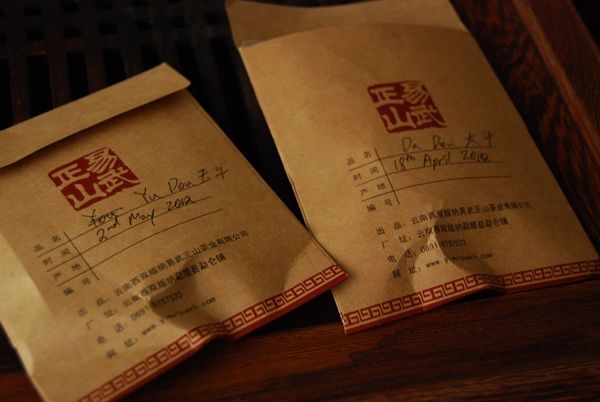
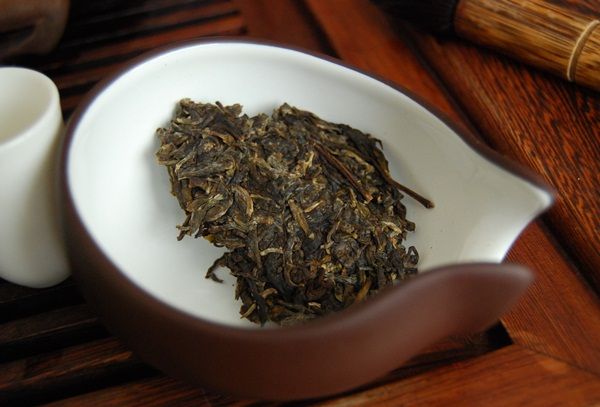
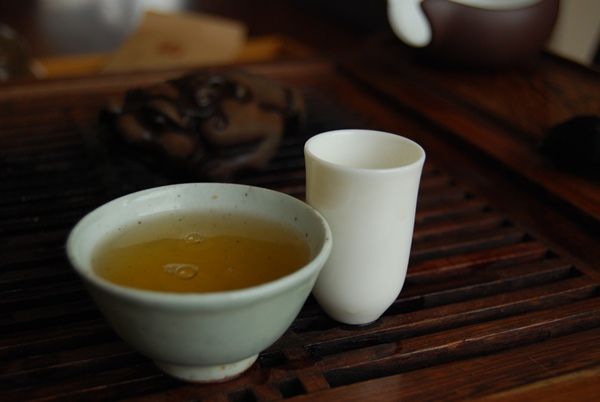
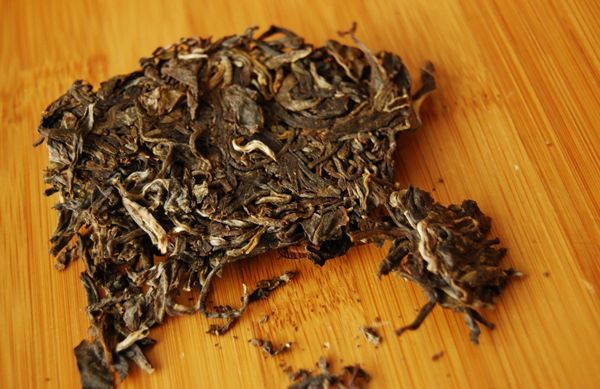
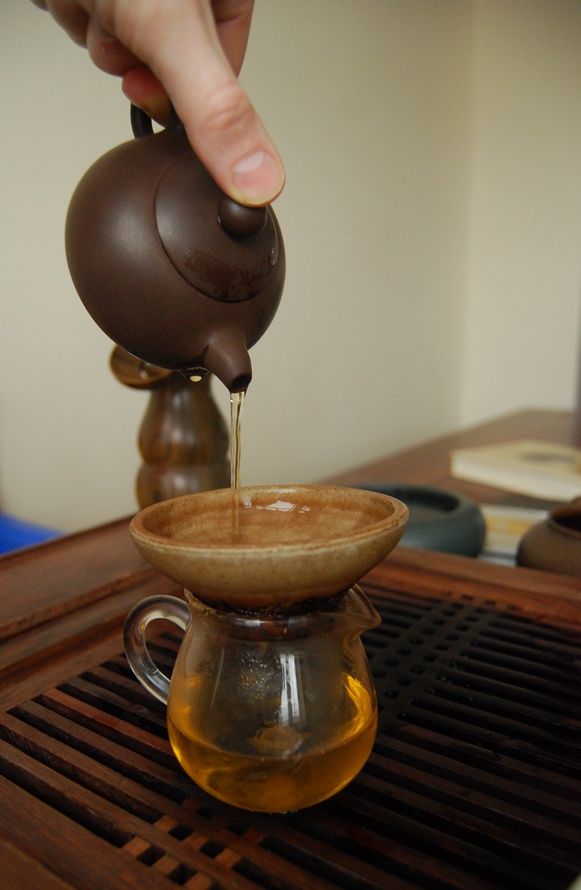
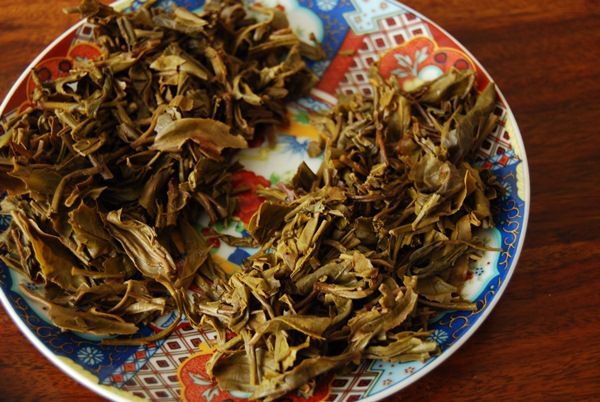
Hey Hobbes,
ReplyDeleteI think your assessments are right on. I like their blends (and am also admittedly a bit of a sucker for blends), but the price can be a little steep. In my experience in the last year, their blends are where some of their value lies, as some of the single area teas are just too overpriced for what they are.
Dear Twodog,
ReplyDeleteAgreed - it would be difficult to imagine paying "the full whack" for the single-mountain cakes; Douji has always been solid, but the trend towards higher prices cannot really be supported. The ~$150 for a cake (as mandated by the Douji brand themselves) could be spent on some pretty serious older tea. Perhaps the market is for the person that just wants a single cake or two, and who doesn't want to dip into the complexity of buying more random cakes.
The blends have always been good, but they're getting a little expensive, too. The Jin Dayi, for example, costs about the same...
Toodlepip,
Hobbes